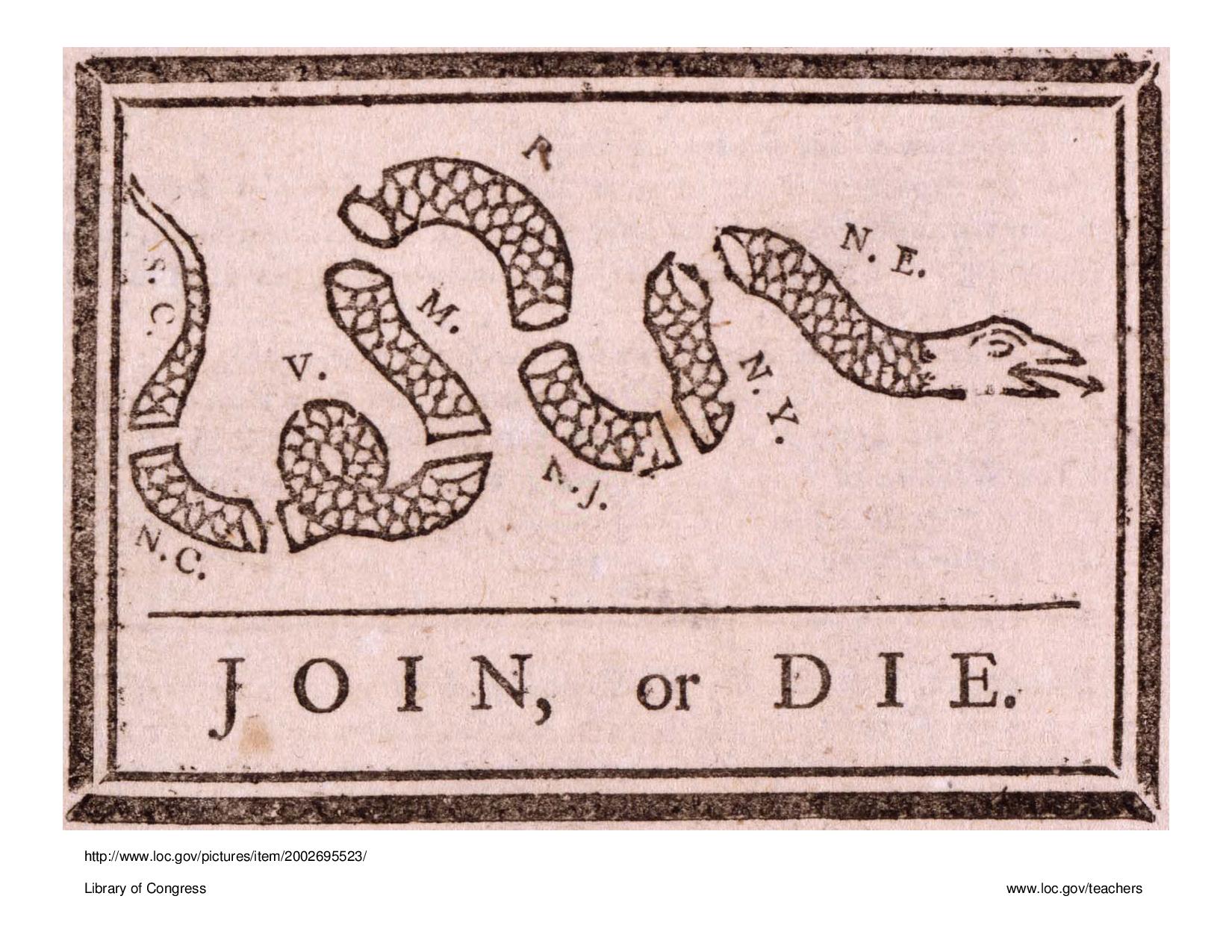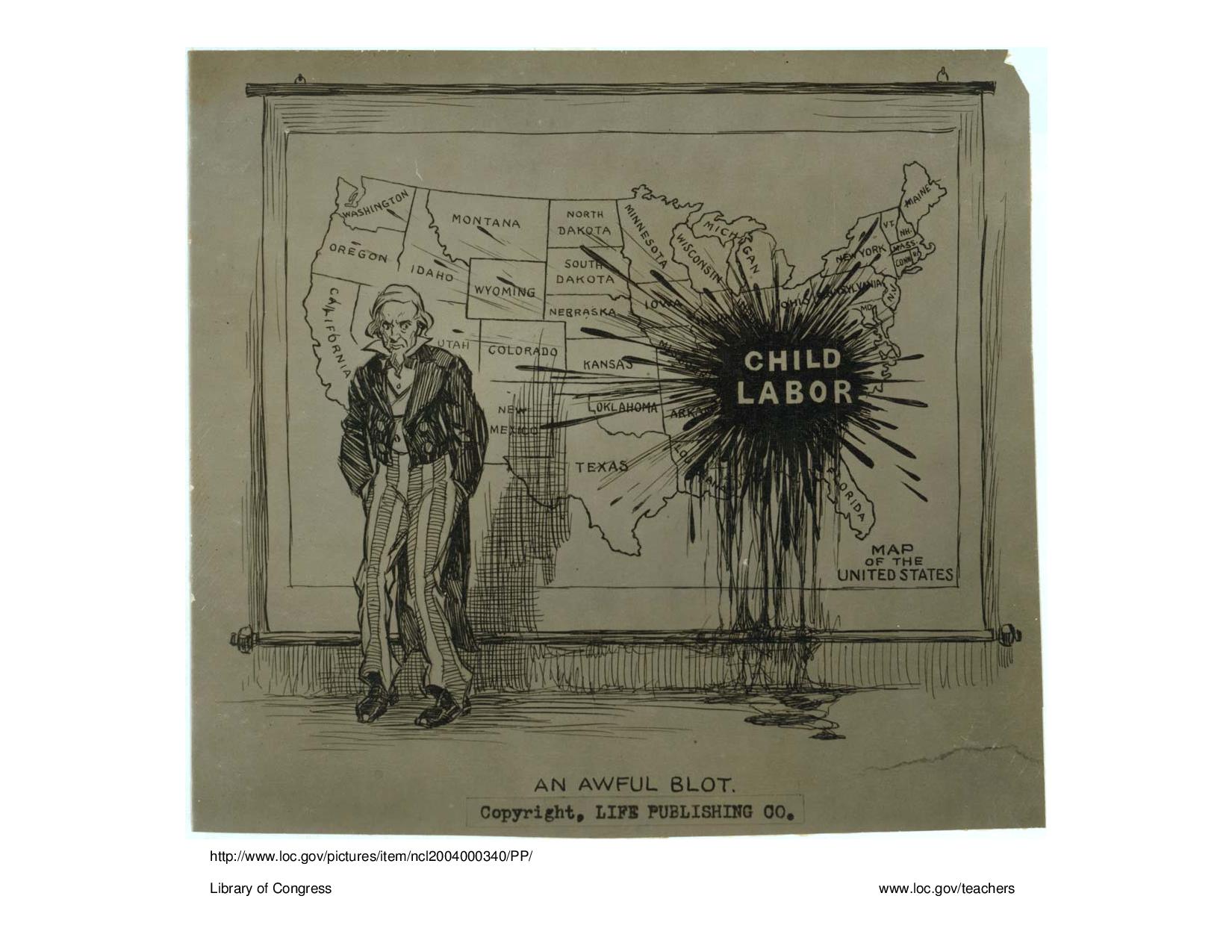All GED Social Studies Resources
Example Questions
Example Question #1 : Political Cartoons

This cartoon is primarily urging __________
unity.
fear.
aggression.
rebellion.
disloyalty.
unity.
The cartoon is titled Join or die and shows a snake divided up into a series of segments. It is one of the oldest and most famous political cartoons in American history and was drawn by Benjamin Franklin to encourage the various colonies of America to join together to ensure their greater collective strength. It is therefore primarily urging unity.
Example Question #76 : Ged Social Studies

The different segments of the snake most likely represent __________
political leaders.
countries.
armies of the United States.
trade agreements.
the Colonies.
the Colonies.
Each of the segments of the snake is labelled. The fact that they are labelled as “NY,” “SC,” “NJ” etc. suggests that they are meant to represent the states; however, this is not an option you are given so you have to consider the fact that the cartoon was created during the colonial era when the states were not yet states, but colonies. The correct answer is therefore that the different segments of the snake represent the colonies.
Example Question #2 : Political Cartoons

This cartoon was published during the French and Indian War and related to the Albany Plan of Union; based on the cartoon the author would most likely __________ the Albany Plan of Union?
encourage support for
encourage rebellion against
mock and deride
criticize
lament
encourage support for
The Albany Plan of Union was proposed by Benjamin Franklin at the Albany Congress in 1754. It took place during the French and Indian War. The Albany Plan of Union proposed to create a unified government for the thirteen colonies to provide for mutual defense and promotion of interests. Because the cartoon is titled "Join, or Die," and seems to show that a disunified body cannot survive, it is reasonable to suggest that the author of this cartoon would most likely encourage support for the Albany Plan of Union.
Example Question #1 : Political Cartoons

Based on the content of this cartoon it was probably drawn during the __________________.
War of 1812
Spanish-American War
Clinton administration
Civil Rights Era
Progressive Era
Progressive Era
The cartoon is centered around the use of child labor in the United States. Answering this question requires you to know a little bit about this topic, or at least enough about the various eras mentioned to be able to make a logical guess. Of course, in modern times, the use of child labor is banned in the United States; however, during the industrial revolution it was exceedingly common to find children, particularly boys, as young as eight or ten working in factories. This is generally true of all the western nations during the industrial revolution. Towards the end of the nineteenth century, and in the early twentieth century, there was a massive social backlash against the use of child labor. It played an important role in the Progressive movement of the first two decades of the twentieth century.
Example Question #2 : Political Cartoons

The visual personification of the United States (shown in the comic above) is usually called _________________.
Uncle Sam
John Bull
Manifest Destiny
General Washington
Captain America
Uncle Sam
The man shown looking disdainfully towards the map of the United States is Uncle Sam. He appears throughout American history as a personification ("human representation") of the American Republic. He is particularly prominent in political cartoons and government propaganda. His counterpart in England is called John Bull.
Example Question #3 : Political Cartoons

Based on this political cartoon it is likely that _________________.
Andrew Jackson supported the British war effort in the War of 1812
Andrew Jackson was not afraid to use the Presidential veto
Andrew Jackson was friends with the British King at the time
Andrew Jackson did not enjoy much popular support
Andrew Jackson was born in Britain
Andrew Jackson was not afraid to use the Presidential veto
Just because Andrew Jackson is dressed as the King of England does not mean there is any evidence to suggest he was born in Britain, supported the British war effort, or was friends with the British King. Nor does it directly suggest that Andrew Jackson did not enjoy much popular support; however, in his hand Jackson is holding a piece of paper that says “veto,” which suggests he was not afraid to use the Presidential veto when given the opportunity.
Example Question #4 : Political Cartoons

This political cartoon is primarily suggesting that _________________.
Andrew Jackson is acting as an authoritarian ruler rather than a President
Andrew Jackson is harming American interests by fostering close ties with Britain
Andrew Jackson does not enjoy the popular support of the electorate
Andrew Jackson will not win in the coming Presidential election
Andrew Jackson is leading the United States into a war it cannot win
Andrew Jackson is acting as an authoritarian ruler rather than a President
In the cartoon Jackson is dressed as a King, an authoritarian ruler, and standing on a ripped-up copy of the United States’ Constitution. The author of this cartoon is clearly suggesting that Jackson should not be considered a truly democratic leader, but as something approaching a totalitarian ruler.
Example Question #5 : Political Cartoons

The cartoon centers around Theodore Roosevelt’s reputation as a(n) _________________.
environmentalist
political figurehead
war hero
trustbuster
imperialist
trustbuster
President Theodore Roosevelt’s domestic policies were in part defined by his opposition to large corporations, called “trusts.” His presidency was also defined by his imperialist and environmentalist (at least by the standards of the day) policies; but, in this cartoon Roosevelt is pictured as a hunter going after the standard oil trust, the beef trust, and the hard-coal trust. So, it seems logical to answer that the cartoon centers around his reputation as a “trustbuster.”
Example Question #2 : Political Cartoons

The principle tone of this cartoon is _________________.
urging support
demanding change
affectionate
mocking irony
demonstrating support
mocking irony
In this cartoon Andrew Jackson, one-time President of the United States, is shown dressed as a King and standing atop ripped-up copies of the United States’ Constitution and the Internal Improvements Bill. The headline reads “Born to command.” The tone is therefore meant to be mocking and ironic. The author is suggesting that Jackson believes he is born to command and thinks of himself as a ruler closer to a King than a President.
Example Question #6 : Political Cartoons

The primary message of this cartoon is that __________.
child labor laws are too strict in the United States
child labor is the primary reason why the East of the United States is much wealthier than the rest of the country
child labor laws are too lenient in the United States
the use of child labor is concentrated in the Eastern manufacturing centers of the country
the use of child labor is a stain on American society and an affront to American values
the use of child labor is a stain on American society and an affront to American values
The primary meaning behind this cartoon is that the use of child labor represents an affront to American society and to American values. The cartoon depicts a map of the United States with a big "blot" or "stain" on the map represented by child labor. The man is most likely meant to be Uncle Sam, looking disdainfully at the use of child labor.
Certified Tutor
Certified Tutor
All GED Social Studies Resources



